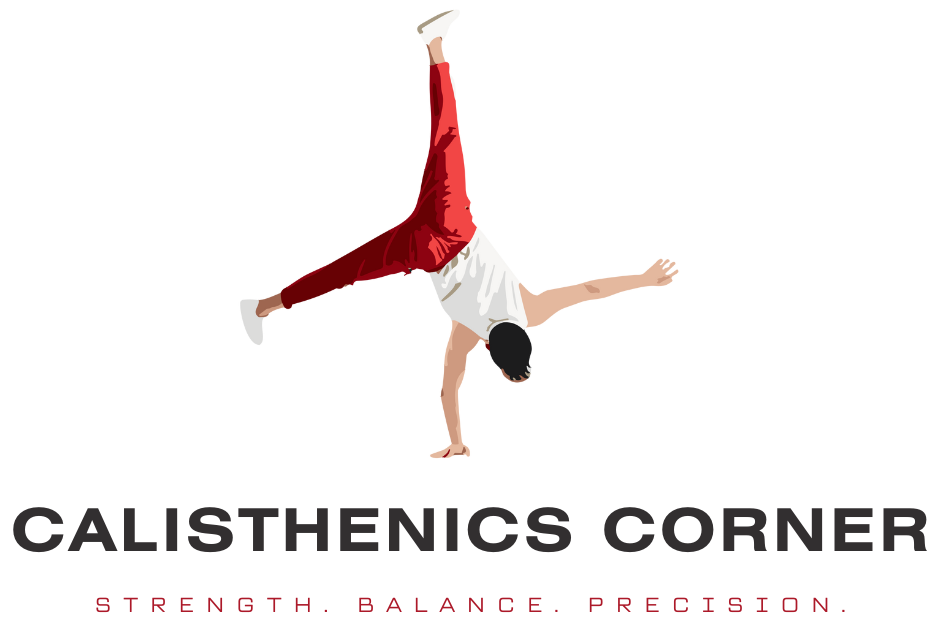If you’re a fitness enthusiast looking to spice up your workout routine, you may find yourself wondering, “Can I mix calisthenics and weightlifting?” The answer is a resounding yes! Calisthenics and weightlifting are two forms of exercise that can complement each other perfectly, providing a well-rounded fitness experience. By combining the bodyweight exercises of calisthenics with the strength-focused nature of weightlifting, you can achieve optimal results in terms of muscle development, endurance, and overall fitness. So, let’s explore the benefits and considerations of incorporating both these workout styles into your fitness regime.
Benefits of Calisthenics
Improves overall strength and endurance
Calisthenics, also known as bodyweight training, offers numerous benefits for individuals looking to improve their overall strength and endurance. By performing exercises such as push-ups, squats, and lunges, you engage multiple muscle groups simultaneously, leading to improved muscular strength and endurance. Calisthenics exercises challenge your body in a functional way, mimicking everyday movements, which can enhance your ability to perform daily activities with ease.
Requires minimal equipment
One of the great advantages of calisthenics is that it requires minimal equipment. Unlike weightlifting, which often necessitates the use of dumbbells, barbells, or weight machines, calisthenics relies solely on your bodyweight as resistance. This makes calisthenics a convenient and cost-effective choice for individuals who may not have access to a fully equipped gym or prefer to work out in the comfort of their own homes.
Can be done anywhere, anytime
Calisthenics offers the flexibility of being able to be performed anywhere, anytime. Whether you’re at home, in a park, or traveling, you can easily fit in a calisthenics workout without the need for bulky equipment or a designated training space. This convenience allows you to stay consistent with your training routine and maintain your progress, even when you’re on the go.
Enhances flexibility and mobility
Regularly practicing calisthenics exercises can significantly improve your flexibility and mobility. Exercises like yoga-inspired flows, deep squats, and various stretches are inherently incorporated into calisthenics routines. These movements help to increase joint range of motion, improve muscle flexibility, and enhance overall body mobility. Enhancing your flexibility not only helps prevent injuries but also allows you to perform exercises with proper form and maximize your results.
Promotes functional fitness
Functional fitness refers to the ability to perform everyday tasks with efficiency and ease. One of the major benefits of calisthenics is its focus on functional movements. By incorporating exercises that mimic real-life movements, such as pushing, pulling, squatting, and lunging, calisthenics improves your ability to perform daily activities and sports-specific movements. This can enhance your overall quality of life and make you more capable of participating in various physical activities.
Benefits of Weightlifting
Builds muscle mass and strength
Weightlifting is a highly effective method for building muscle mass and increasing strength. Through the use of external resistance, such as dumbbells, barbells, or weight machines, weightlifting targets specific muscle groups and promotes muscle hypertrophy. Regular weightlifting sessions can lead to noticeable increases in muscle size and overall strength, allowing you to lift heavier weights and perform more challenging exercises over time.
Increases bone density
Weightlifting has been proven to increase bone density. As you engage in weight-bearing exercises, such as squats, deadlifts, and bench presses, you place stress on your bones and stimulate them to become stronger. This is particularly beneficial for individuals at risk of osteoporosis or those looking to maintain strong and healthy bones as they age. By incorporating weightlifting into your routine, you can improve your bone density and reduce the risk of fractures or other bone-related issues.
Boosts metabolism
Weightlifting offers excellent benefits for your metabolism. When you engage in resistance training, your body’s energy expenditure increases during and after your workout. The more lean muscle mass you have, the higher your metabolic rate becomes. This means that weightlifting not only helps you burn calories during your workout but also enhances your ability to burn calories at rest. As a result, weightlifting can be a valuable tool for those looking to lose weight or maintain a healthy body composition.
Improves body composition
Weightlifting is known for its ability to improve body composition. Regular resistance training can help you decrease body fat percentage and increase muscle mass. By increasing your muscle-to-fat ratio, weightlifting can help you achieve a leaner and more toned physique. This is especially significant for individuals looking to sculpt specific muscle groups, enhance muscle definition, and improve overall body aesthetics.
Enhances athletic performance
Weightlifting can greatly improve your athletic performance. By strengthening specific muscle groups and enhancing overall muscular power, weightlifting exercises translate into improved performance in sports and physical activities. Olympic weightlifters, for example, rely heavily on weightlifting exercises to increase explosiveness, speed, and overall strength. Athletes from various sports, such as football, basketball, and track and field, can also benefit from incorporating weightlifting into their training routines to enhance their overall athletic abilities.
Differences Between Calisthenics and Weightlifting
Resistance source
One key difference between calisthenics and weightlifting lies in the source of resistance used. In calisthenics, the resistance primarily comes from using your own body weight, whereas weightlifting involves using external weights or resistance machines. Calisthenics exercises like push-ups and squats challenge your muscles by manipulating leverage and body positioning, while weightlifting exercises like bench presses and deadlifts require you to lift predetermined weights.
Range of motion
Another distinction between calisthenics and weightlifting is the range of motion involved in each type of exercise. Calisthenics exercises generally involve a wide range of motion, as they aim to activate multiple muscle groups and improve overall mobility. On the other hand, weightlifting exercises often focus on specific muscle groups and may have a smaller range of motion, depending on the exercise and equipment used.
Equipment requirements
Calisthenics and weightlifting also differ in terms of equipment requirements. Calisthenics can be performed with little to no equipment, as it primarily relies on bodyweight exercises. This makes calisthenics accessible to anyone, regardless of their access to a gym or equipment. Weightlifting, however, typically requires access to weights such as dumbbells, barbells, weight plates, or weight machines. While weightlifting can sometimes be performed with limited equipment, having access to a well-equipped gym or home gym setup is generally beneficial for those looking to engage in this type of training.
Exercise variations
Both calisthenics and weightlifting offer a wide range of exercise variations, but the types of movements emphasized differ. Calisthenics exercises often mimic functional movements and utilize compound exercises that engage multiple muscle groups simultaneously. You can perform variations of exercises like push-ups, squats, lunges, and pull-ups to continuously challenge your body. Weightlifting exercises, on the other hand, often isolate specific muscle groups and aim to increase strength in those targeted areas. Exercises like bicep curls, lateral raises, and tricep extensions are commonly performed in weightlifting routines.
Muscle activation
Calisthenics and weightlifting also differ in terms of muscle activation. Calisthenics exercises require a greater level of stability, as you must control your body position and movement through space. This often results in engaging the smaller stabilizer muscles in addition to the larger muscle groups. Weightlifting exercises, while still engaging stabilizer muscles to some extent, tend to predominantly target the main muscle groups being trained.
Skill and technique development
Finally, a notable difference between calisthenics and weightlifting lies in the development of skills and techniques. Calisthenics requires a focus on mastering bodyweight movements and progressions, such as mastering a proper push-up form before attempting more challenging variations like handstand push-ups. Weightlifting, on the other hand, involves learning proper lifting techniques and form to maximize performance and minimize the risk of injury. Both disciplines require continuous practice and gradual progression to improve skill and technique.
Potential Challenges of Combining Calisthenics and Weightlifting
Conflicting training principles
Combining calisthenics and weightlifting can present the challenge of conflicting training principles. Calisthenics generally focuses on high repetitions and bodyweight exercises for endurance and muscular control, while weightlifting often involves lower repetitions and heavier weights for strength and power development. Trying to find the balance between these two training principles can be challenging and may require careful planning and programming.
Overtraining or injury risks
Another challenge of combining calisthenics and weightlifting is the risk of overtraining or injury. Both forms of exercise can be physically demanding and place stress on your muscles, joints, and connective tissues. Improper training volume or intensity, inadequate rest and recovery, or neglecting proper form and technique can increase the risk of overuse injuries or muscular imbalances. It is important to listen to your body, gradually progress, and seek professional guidance if needed to minimize the chances of overtraining or sustaining injuries.
Balancing workout intensity
Balancing the intensity of your workouts when combining calisthenics and weightlifting is another potential challenge. It’s essential to consider the overall workload on your muscles and avoid excessive strain. Attempting to do high-intensity calisthenics exercises, followed by heavy weightlifting sessions without adequate rest, can lead to muscular fatigue and decreased performance. Finding the right balance and properly structuring your training plan to allow for recovery and adaptation is crucial for optimal results.
Different training goals
Calisthenics and weightlifting often appeal to individuals with different training goals. Calisthenics enthusiasts may prioritize bodyweight mastery, agility, and functional fitness, while weightlifters may focus on strength, muscle mass, and powerlifting goals. Finding a way to combine these distinct goals and adapt your training approach accordingly can be challenging, but it’s important to remember that your training should align with your personal preferences and objectives.
Integration Strategies for Calisthenics and Weightlifting
Periodization
Using a periodized training approach can be effective when combining calisthenics and weightlifting. Periodization involves dividing your training into distinct phases, each with specific goals and training protocols. You can dedicate blocks of time to focus on calisthenics exercises, followed by periods of weightlifting emphasis. This approach allows you to target different aspects of fitness and prevent plateauing while giving your body adequate recovery time.
Alternating training days
Another integration strategy is to alternate your training days between calisthenics and weightlifting. For example, you can dedicate one day to performing calisthenics exercises and another day to weightlifting exercises. This approach allows you to give adequate attention to both forms of training while avoiding excessive strain on specific muscle groups.
Integrating exercises within a workout
Integrating exercises from both calisthenics and weightlifting within a single workout can provide a comprehensive training experience. You can incorporate bodyweight exercises like push-ups and squats in between weightlifting sets to maintain a high heart rate and engage multiple muscle groups. This approach allows you to enjoy the benefits of both calisthenics and weightlifting within the same training session.
Focusing on complementary muscle groups
To optimize your training, it can be beneficial to focus on complementary muscle groups when combining calisthenics and weightlifting. For example, if you perform a lower body weightlifting session, you can supplement it with upper body calisthenics exercises to give your lower body muscles adequate rest. This approach ensures balanced muscle development and prevents overtraining particular muscle groups.
Adjusting volume and intensity
Calisthenics and weightlifting require different levels of volume and intensity. When combining both forms of exercise, it’s important to adjust the volume and intensity to meet your individual needs and goals. For example, you can decrease the number of sets and reps for calisthenics exercises on days when you focus on heavy weightlifting, and vice versa. This allows you to optimize your performance and progress in both disciplines without overexerting yourself.
Sample Calisthenics and Weightlifting Workout Plan
Warm-up routine
Begin your workout with a dynamic warm-up routine that includes exercises to increase core temperature, improve mobility, and activate the muscles you’ll be using during your workout. This can include jogging in place, arm circles, leg swings, and lunges.
Lower body workout
Perform lower body exercises such as squats, lunges, step-ups, and glute bridges. You can start with bodyweight exercises and gradually progress to weighted variations as you become more comfortable and stronger.
Upper body workout
Engage in exercises targeting the upper body, including push-ups, pull-ups, dips, and rows. Again, start with bodyweight exercises and progress to more challenging variations or incorporate weights as needed.
Core exercises
Integrate core exercises such as planks, Russian twists, and mountain climbers into your routine. These exercises help strengthen the muscles in your abdomen, lower back, and hips.
Cool-down and stretching
Finish your workout with a cool-down period that includes static stretching to improve flexibility and promote muscle recovery. Focus on stretching the major muscle groups you targeted during your workout.

Considerations for Beginners
Mastering proper form and technique
When starting with calisthenics or weightlifting, it’s crucial to focus on mastering proper form and technique. This helps prevent injuries and ensures that you’re targeting the intended muscle groups effectively. Consider seeking guidance from a fitness professional to ensure you’re performing exercises correctly.
Starting with your bodyweight
For beginners, it’s recommended to start with bodyweight exercises to develop a solid foundation of strength and control. This allows you to assess your current fitness level and gradually progress to more challenging variations or incorporate weights as you become more comfortable and confident.
Gradually incorporating weights
If your goal includes weightlifting, it’s important to gradually incorporate weights into your training routine. Begin with lighter weights and gradually increase the load as your strength and confidence improve. This helps prevent overexertion and provides a safer and more effective training experience.
Listening to your body
Listening to your body is key when combining calisthenics and weightlifting. Pay attention to any discomfort or pain during exercises, and adjust your form, technique, or intensity accordingly. Rest when needed and consult a healthcare professional if you have any concerns about potential injuries or limitations.
Seeking professional guidance
If you’re new to calisthenics or weightlifting, consider seeking professional guidance. A certified personal trainer can provide personalized workout plans, ensure correct exercise execution, and provide valuable advice to help you reach your fitness goals safely and effectively.
Examples of Calisthenics and Weightlifting Exercises
Push-ups
Push-ups are a classic calisthenics exercise that targets the chest, shoulders, and triceps. Place your hands shoulder-width apart, engage your core, and lower your body until your chest nearly touches the ground. Push back up to the starting position, focusing on maintaining proper form and alignment throughout the movement.
Squats
Squats are a fundamental lower body exercise that can be performed with or without weights. Start with your feet hip-width apart, engage your core, and sit back into a squat position, lowering your hips until your thighs are parallel to the ground. Push through your heels to stand back up, squeezing your glutes at the top of the movement.
Deadlifts
Deadlifts are a compound weightlifting exercise that primarily targets the muscles of the posterior chain, including the hamstrings, glutes, and lower back. Start with your feet hip-width apart, grip the barbell shoulder-width apart, engage your core, and lift the barbell off the ground by extending your hips and knees. Lower the barbell back to the ground, maintaining a neutral spine throughout the movement.
Lunges
Lunges are a versatile lower body exercise that can be performed in various directions and with or without weights. Start with one foot forward and the other foot behind, lower your body by bending your knees until both knees form 90-degree angles. Push through your front foot to return to the starting position, then switch legs and repeat.
Pull-ups
Pull-ups are a challenging calisthenics exercise that targets the muscles of the back, shoulders, and arms. Hang from a bar with your palms facing away from you, engage your core, and pull yourself up until your chin is above the bar. Lower yourself back down with control and repeat.
Bench press
Bench press is a classic weightlifting exercise that primarily targets the chest, shoulders, and triceps. Lie down on a bench, grip the barbell slightly wider than shoulder-width apart, lower the barbell to your chest, and push it back up until your arms are fully extended. Focus on keeping your elbows tucked in and maintaining a controlled movement throughout.
Handstand push-ups
Handstand push-ups are an advanced calisthenics exercise that targets the shoulders, triceps, and upper back. Start in a handstand position against a wall, with your hands shoulder-width apart and fingertips pointing toward the wall. Lower your body by bending your arms, then push back up to the starting position. This exercise requires significant upper body strength and balance.
Barbell rows
Barbell rows are a weightlifting exercise that targets the muscles of the back, particularly the lats and rhomboids. Start with your feet hip-width apart, hinge forward at your hips while keeping your back straight, and grip the barbell with your palms facing down. Pull the barbell up toward your chest, squeezing your shoulder blades together, then lower it back down with control.
Dips
Dips are a challenging calisthenics exercise that primarily targets the triceps, chest, and shoulders. Start by gripping parallel bars with your arms fully extended and your body supported above the bars. Lower your body by bending your elbows until your upper arms are parallel to the ground, then push back up to the starting position. Keep your core engaged and maintain proper form throughout the movement.
Shoulder press
Shoulder press is a weightlifting exercise that targets the shoulder muscles. Start by sitting or standing with a dumbbell or barbell held at shoulder height. Press the weight overhead by extending your arms, then slowly lower it back down to shoulder height. Maintain a neutral spine and engage your core throughout the movement.
Progress Tracking and Goal Setting
Using workout logs
Tracking your workouts using a workout log can be highly beneficial when combining calisthenics and weightlifting. A workout log helps you keep track of the exercises, sets, reps, and weights used for each session. This allows you to monitor your progress, identify areas for improvement, and make informed adjustments to your training plan.
Tracking strength and muscle gains
In addition to using a workout log, tracking your strength and muscle gains can provide valuable insights into your progress. Regularly assess and record key indicators such as the amount of weight lifted, the number of repetitions performed, or even body measurements and body composition changes. This allows you to set realistic goals, track improvements, and stay motivated throughout your fitness journey.
Setting achievable goals
Setting achievable goals is crucial for staying motivated and measuring your progress. Whether your goals involve increasing strength, improving endurance, or achieving specific movement capabilities, establish clear and realistic targets that can be broken down into smaller milestones. This approach allows you to celebrate small victories along the way and maintain consistent progress.
Monitoring progress over time
Consistently monitoring your progress over time is essential for evaluating the effectiveness of your training program and making necessary adjustments. Regularly assess your performance, body composition, and overall fitness level. This helps you identify trends, determine what works best for you, and make informed decisions about your training approach.
Conclusion
When it comes to combining calisthenics and weightlifting, there is no one-size-fits-all approach. The decision to integrate these two forms of exercise ultimately depends on personal preference, specific goals, and individual circumstances. Both calisthenics and weightlifting offer unique benefits and can complement each other when incorporated intelligently into a well-rounded training program.
Maintaining a balance between calisthenics and weightlifting requires careful consideration of training principles, workout intensity, and alignment with your goals. It’s important to focus on proper form and technique, gradually progress, and listen to your body to prevent overtraining and reduce the risk of injuries. Seeking guidance from a qualified professional can provide additional support and ensure a safe and effective training experience.
Remember that flexibility in your training approach is key. Experiment with different strategies, exercise variations, and training protocols to find what works best for you. By combining the benefits of calisthenics and weightlifting, you can achieve a comprehensive fitness routine that caters to your individual needs and helps you reach your desired fitness goals.








